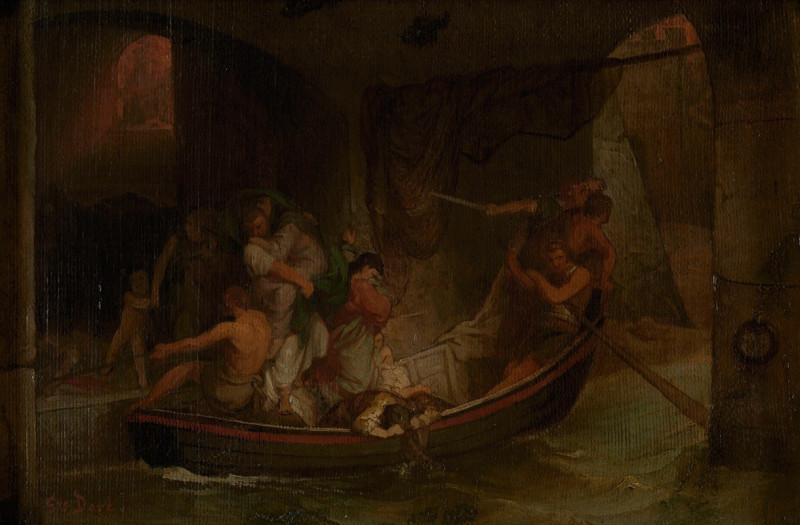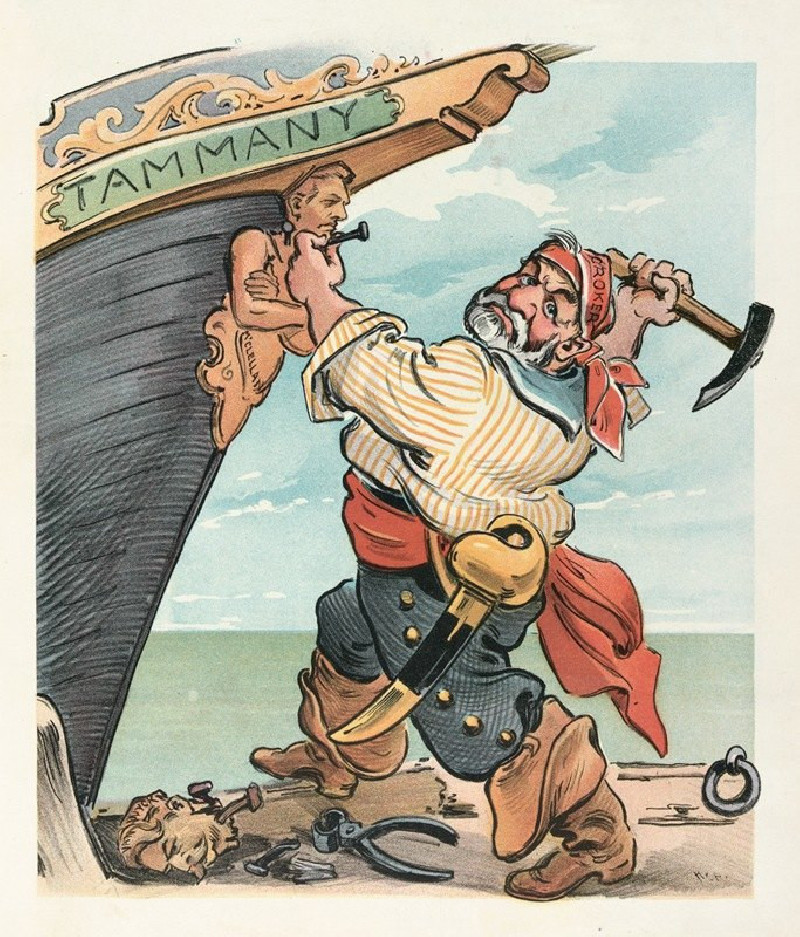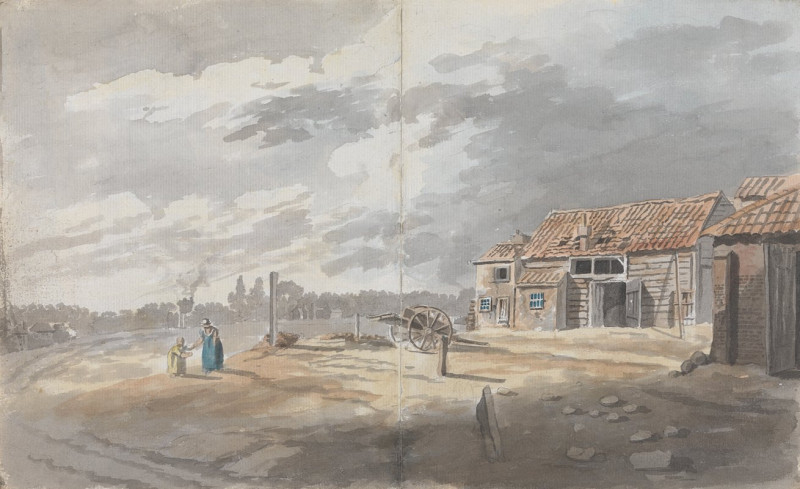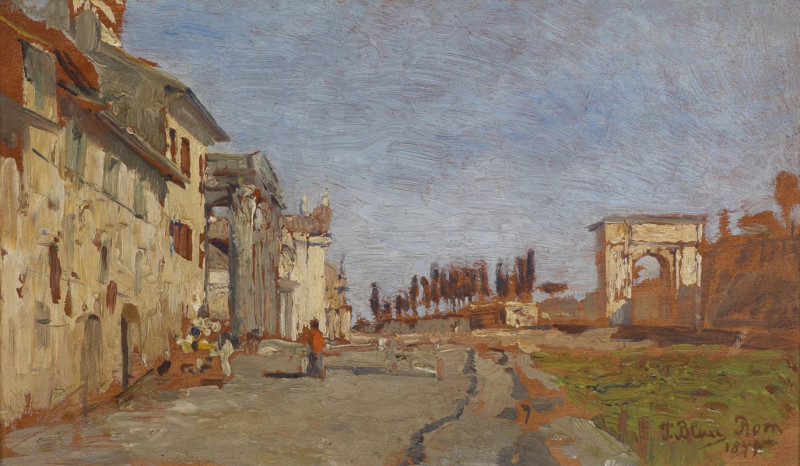A Backstreet in London (1868)
Technique: Giclée quality print
Recommended by our customers
More about this artwork
Gustave Doré's evocative sketch "A Backstreet in London" captures a vivid snapshot of urban life in the late 19th century. This drawing, rendered in soft yet poignant pencil strokes, depicts a narrow lane shadowed by the imposing structures of the city. The composition conveys a sense of depth and confinement, guided by the towering buildings that loom on either side of the alley.In the foreground, various figures bring life to the scene. A group of people, possibly a family, huddles together, their cloaks and dresses suggesting wear from daily toil. Children among them seem to echo the innocence and hardship of life in such austere settings. Toward the center, a lone figure in a coat walks away from the viewer, adding a mysterious element to the tableau. His presence hints at the transient, anonymous nature of city life.Further down the alley, more silhouettes can be seen. These forms, less detailed, merge with the shadows, symbolizing perhaps the blurred lines between individual identities in the bustling urban sprawl. The hanging items, possibly laundry or goods for sale, add a domestic touch to the scene, suggesting that life persists here amid adversity.Doré's choice to leave the sketch unfinished or seemingly so, encourages the viewer to focus on the textural and emotional layers rather than precise details. This artistic technique enhances the atmosphere of dimness and desperation, reflective of the socio-economic conditions of London's lesser-seen byways during that era.Through "A Backstreet in London," Doré not only provides a visual archive of historical London but also invites reflection on the social issues and everyday experiences of its residents.
Delivery
Returns
Paul Gustave Louis Christophe Doré (6 January 1832 – 23 January 1883) was a French printmaker, illustrator, painter, comics artist, caricaturist, and sculptor. He is best known for his prolific output of wood-engravings illustrating classic literature, especially those for the Vulgate Bible and Dante's Divine Comedy. These achieved great international success, and he became renowned for printmaking, although his role was normally as the designer only; at the height of his career some 40 block-cutters were employed to cut his drawings onto the wooden printing blocks, usually also signing the image.














































